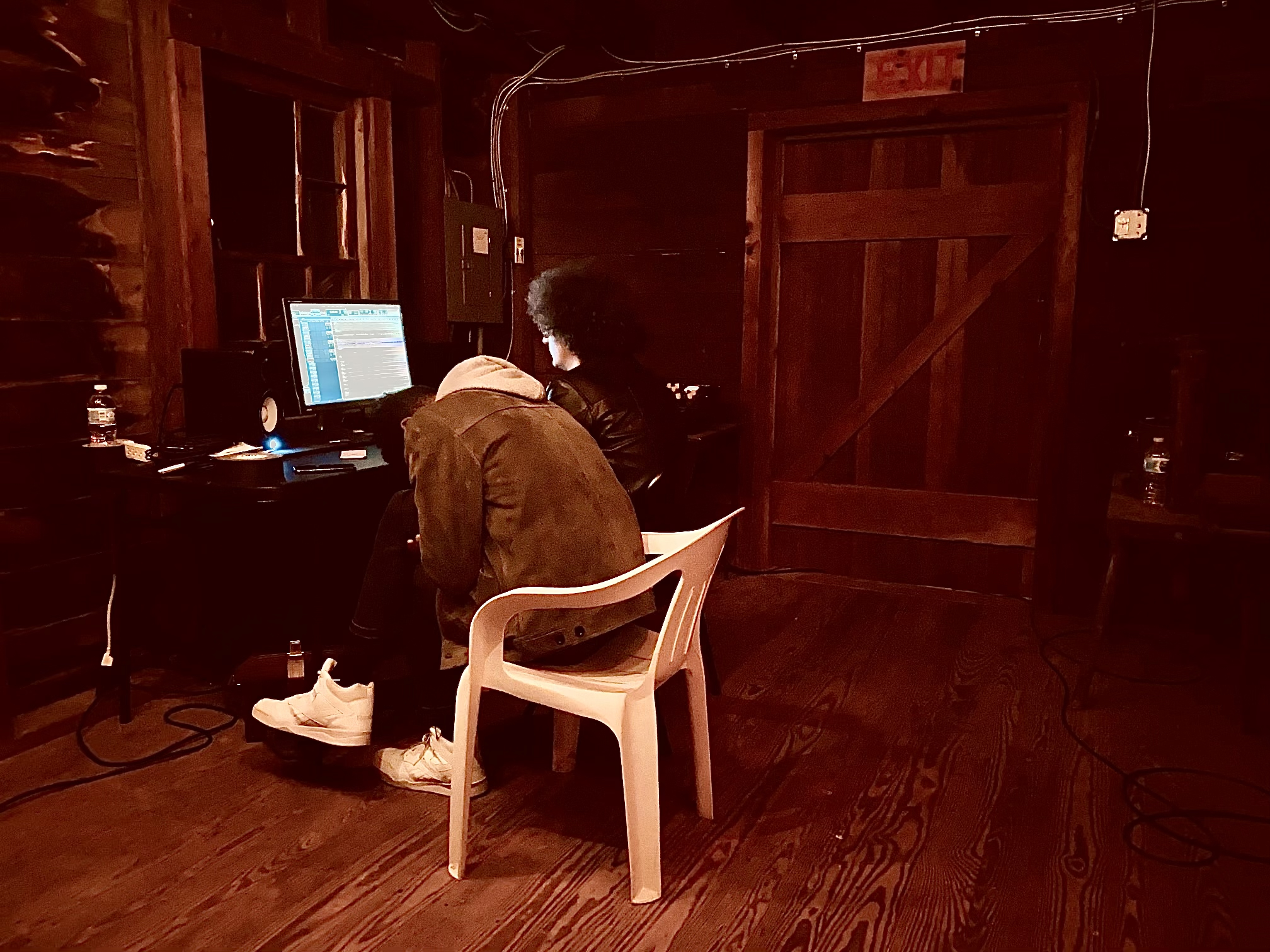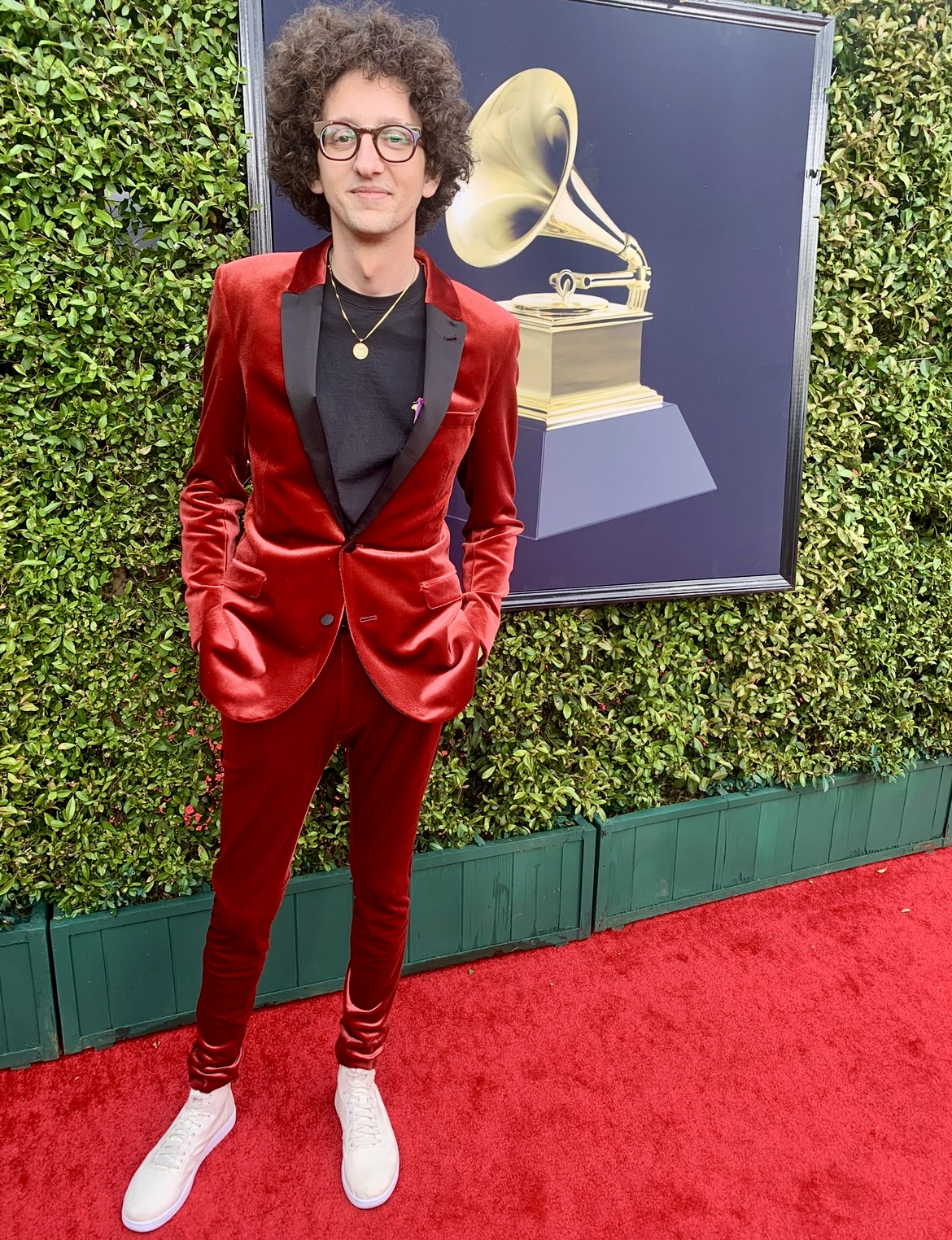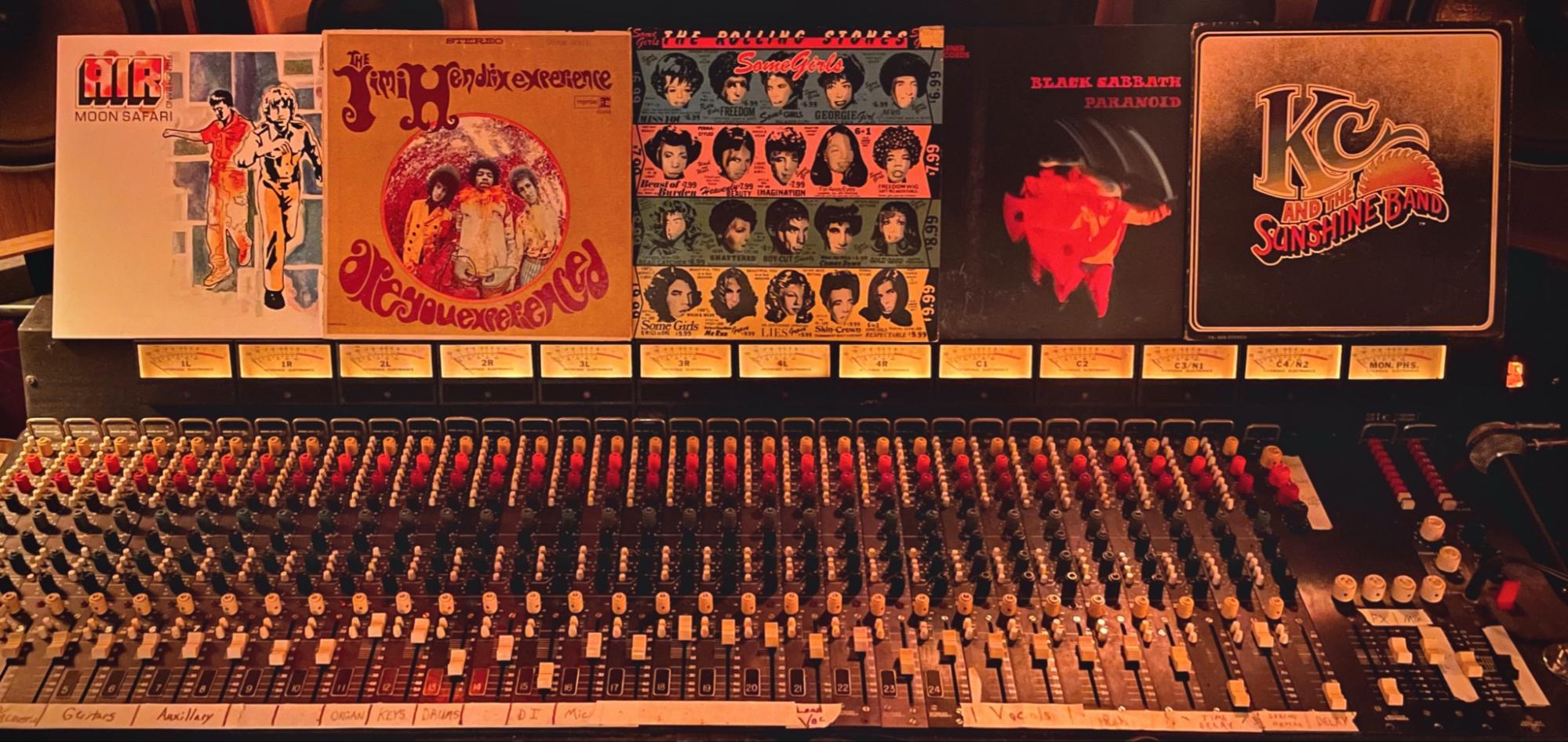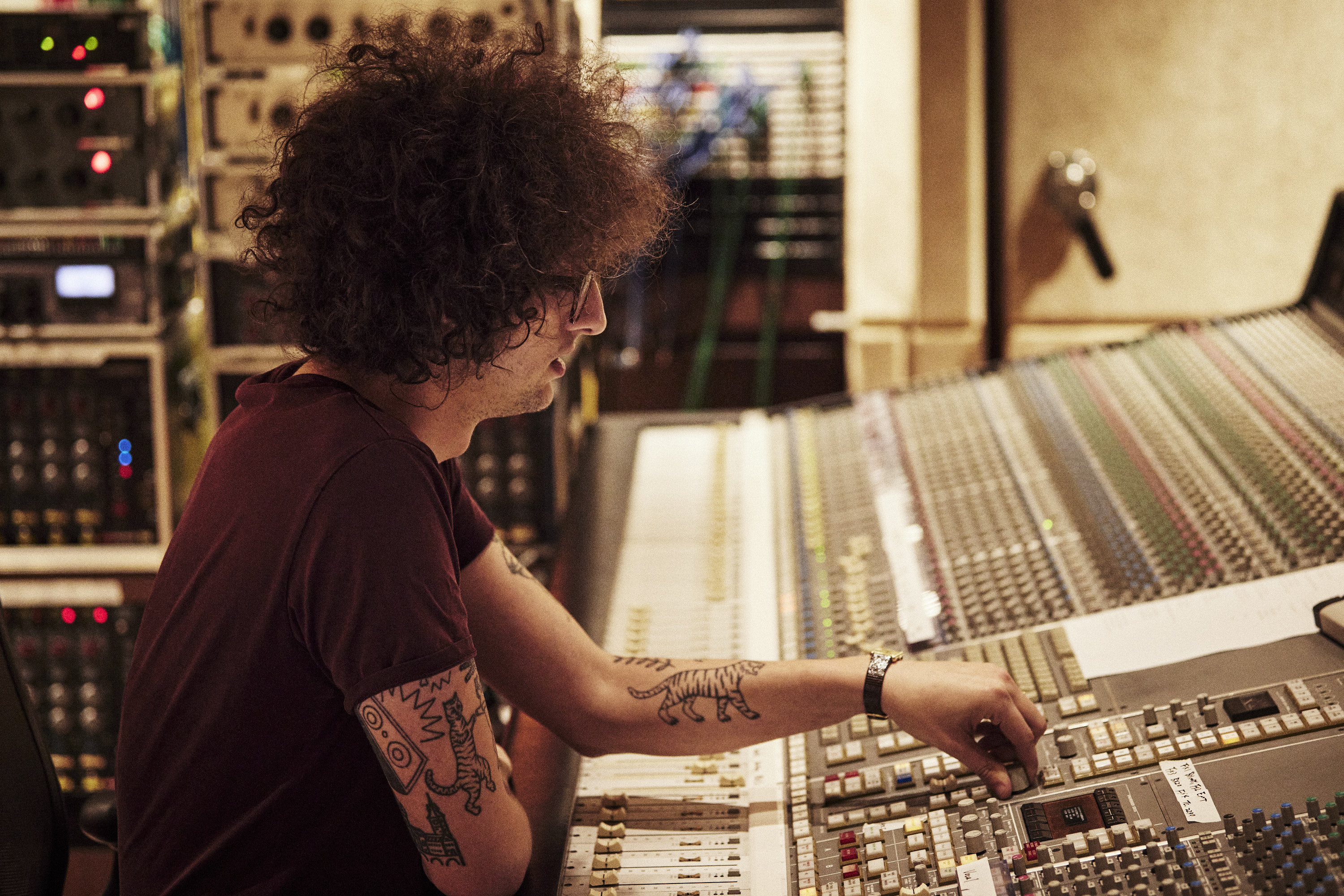An Interview With Grammy Winning Engineer, Marc Whitmore
Whitmore Is Nominated For His Work at This Year's Grammy Awards
The holidays are over and a new year has begun. As we kick off another year, music aficionados turn their attention to the first big event of the new year: the Grammy awards which take place on February 4th. Awards are important, it’s an appropriate opportunity to give accolades to all of the nominees, whether they win, or not. It’s also an exciting chance to cheer on those who were associated with your favorite musical projects of the past year. Hey, if you’re not a sports fan, this is as close as you’ll get to rooting for your favorite team.
Marc Whitmore is a producer and engineer based in Santa Fe, New Mexico and he’s up for his second Grammy nomination for “Album of the Year” for his engineering work on Jon Batiste’s latest album, World Music Radio (2023). Previously, Marc won the award in 2022 for Batiste’s WE ARE (2021). It’s not only that album either, Whitmore’s contributions on Lana Del Rey’s nominated album (in the same category this year) makes this an extra-special Grammy nomination year for him.
Whitmore is a proponent of analog sound and recording techniques and he also creates music under his own name and also with some colleagues in a group called Cat Cult. He was kind enough to spend some time answering my questions about his career, give us a sneak peek into some of the technologies he uses in his studio, and - of course - talk about creating music in the analog realm.
Evan Toth: You make your living in Santa Fe, New Mexico rather than in the usual musical hubs of Nashville, Los Angeles or the New York City area. How did you end up in New Mexico and what do you think you can achieve there differently rather than the previously mentioned spots?
Marc Whitmore: I honestly just fell in love with the uniqueness of New Mexico. The natural beauty, ancient ruins, multicultural mix of people, and slower pace of life have been a refreshing breath of air, and the creative vibe in Santa Fe has been very conducive to the type of music I like to make. I’ve found that artists with similar values feel the same way about Santa Fe. As a creative destination for artists from all over the world, I’ve had the privilege of working on a wide variety of music since moving here.
ezt: You’ve completed a lot of work as an engineer for Jon Batiste. Recently, you’ve been nominated for your second Grammy for your work on his latest album, World Music Radio, but you’ve previously won a Grammy for your work on Batiste’s 2021 album, We Are. As if that weren’t enough, you also engineered a track that he was featured on on Lana Del Rey’s album this year, Did You Know That There’s a Tunnel Under Ocean Blvd album. It sounds like you are a part of a very strong and successful team. Can you talk a little about how you made the connection with him and your working relationship with Batiste?
mw: I first connected with Jon when I was given the opportunity to record his first solo record, “Hollywood Africans” with T. Bone Burnett in New Orleans back in 2015. That record, and all of the work we’ve done together since has been pretty experimental. Jon is in New York, where analog recording is sadly dying out in the big studios, so I suppose I have been his guy for vintage, analog sounds in a way. My background working with the Black Keys and other bands contributed to a rock element that Jon liked about my style of recording and mixing.
 Batiste and Whitmore Listen to a Playback. Credit: Mikey Freedom Hart
Batiste and Whitmore Listen to a Playback. Credit: Mikey Freedom Hart
ezt: Are you getting used to that red carpet life? Do you have a usual tux that you reach for now? Tell me about your feelings and impressions with the experience of attending - and winning! - the Grammys.
mw: It’s all a bit surreal. I don’t feel quite right in a traditional tux, last time I wore a red velvet one with a t-shirt and sneakers. I’ve got something unique planned for this year that I had custom made for me in Pakistan, I think it showcases my unique personality and unusual style quite well.
Experiencing the red carpet and an elevated amount of attention to my career has all been a bit of a whirlwind, but it’s an honor to be recognized for my work. I have spent the past decade giving it everything I’ve got and growing professionally in a variety of ways. I’ve stayed true to the craft and have only worked on music that I believe in strongly over the years. I’m grateful to see the projects I’ve worked on being so well received by the public.
 Credit: Carolyn Whitmore
Credit: Carolyn Whitmore
ezt: Share with our audience a bit of your pedigree and journey from Nashville to where you are today.
mw: I started in Nashville interning at Blackbird Studio, where I learned how to have a hugely complicated setup while making it look clean, simple, and comfortable. After that, I interned, and eventually assisted, at Alex The Great Recording, which is a cool indie studio where I got a lot of my tape chops. This path continued as I started to engineer at a studio next door, called Club Roar, which was a huge warehouse space with some of the best analog gear in Nashville. That space is so unique and crazy, it’s where I realized that vibe is almost always more important than “perfect” acoustics. After that, I engineered at a similar indie studio called Haptown for a couple of years with Roger Moutenot. We did a couple of records with Patrick Carney producing at Haptown. I clicked well with Patrick and became his full-time engineer for his production projects out of his studio, Audio Eagle. I learned to love vintage analog equipment from all of these studios, and I actually found that my fluency with Pro Tools was what allowed most producers the freedom to kick back and treat it like an analog session, which is what inspired my current style of working.
ezt: During your work on Batiste’s We Are album, you did some work at Esplanade Studios in New Orleans which is an old historic church. What was it that you did to use the space to its fullest?
mw: We were going for a massive choir sound for the track “We Are.” We had recorded at Esplanade many times before and the sound there is so rich, lively and intense, which was perfect for what we wanted. I used something like 12 mics to record the choir, organ, and grand piano. Lot’s of compression to tape, lots of room sound!
ezt: You’re a fan of recording in unusual locations. Why is that? Recording studios are often carefully tuned and controlled spaces, what’s the adventure of sonically dealing with a space that can be challenging?
mw: It’s really wonderful to have a perfectly tuned control room with total isolation, but if the live room on the other side isn’t perfect for the music, it doesn’t really matter. And by perfect, I don’t mean sonically. I want the environment of a session to make the artist comfortable above all else.
I’ve done enough recording to confidently place the right mics without having the perfect monitoring setup. Regardless of if it’s a historic church, an off grid adobe, an outdoor desert setting, an old barn, or Carneige Hall - I take the time to evaluate the space and set up equipment in a way that is most conducive to the vision and most comfortable for the musician. I enjoy the challenge.
 Credit: Nolan Seidler
Credit: Nolan Seidler
ezt: Can you - in your own words - define for someone who is unfamiliar with the nuts and bolts of the recording process, exactly what an engineer is/does?
mw: Traditionally, the engineer handles most technical aspects of recording and is the link between the artist/producer and the way things sound tonally. All depending on the project, the engineer uses their preferred combinations of microphones, preamps, equalizers, and compressors to capture each sound in a way they see fit for the project.
ezt: What do you think you bring to the table as an engineer that is unique?
mw: I focus much more time on the source of the sound before I begin listening to microphones. Sure, you can always fix things in post-production, but I want it to sound finished before I press record. I spend a lot of time deciding the placement of everything in the room, tuning the drums, balancing amp levels, and adjusting the overall feng shui of a room.
ezt: You love taking the analog approach in your work. Can you explain some technical ways that you use vintage analog gear to capture the recordings that you’re working on?
mw: I do love working with analog tape machines, not just for the sonic quality they add, but the pace and intention that they demand out of a session. Tape is becoming less and less practical to use on sessions, but I still take the same approach even with digital recording. It’s crucial for me to have some kind of console while I’m recording so I’m able to control the mix without touching the computer. Treating Pro Tools like it’s just a tape machine in the tracking process keeps the analog energy that I love.
ezt: In your studio you use the Stevenson Interface Electronics 32 Channel Series 104 analog console. How did you settle upon that vintage board? Have you faced any challenges in keeping it in good repair?
mw: There are a lot of reasons actually. It’s a rad desk from the mid 70’s built by Lou Stevenson in Houston, TX. The sound is somewhere in the realm of Quad Eight, Electrodyne, and API. The EQ’s are really smooth and broad. The distortion you can get from the preamps and the busses is so nice, the sound never really falls apart like on a lot of other consoles. In addition to the sound, it’s very cool looking. The knobs are all different colors and it is unusually shallow, which makes it really comfortable to use. I never liked stretching and squinting to see which knob I’m turning on a huge console. Luckily, I’ve had no real issues with it. Being that it’s a modular hand-made desk, it’s much easier to work on than a lot of other consoles.
 Credit: Marc Whitmore
Credit: Marc Whitmore
ezt: You also direct front of house sound for several musicians in different venues including Carnegie Hall). How is that similar, or different, from the work you achieve in the studio?
mw: It’s not too different for me. I treat it like I would a live studio recording, meaning it has to sound finished before you press record, or in this case, start the show. My favorite part of recording a band is the energy in the room from the board mix, so replicating that with thousands of people is really fun.
ezt: Where is the digital link of the chain in your recordings? How far down the line can you maintain the analog signal that you work so hard to create?
mw: I typically have Pro Tools in line right after the tape machine, with the tracks in input and the screen off. It’s an easy transfer once you’re done tracking. Whether recording to tape or not, I always use pretty much every piece of outboard gear available to achieve saturation. The sounds we love from old records were filtered through a lot more metal than just one preamp on an interface.
ezt: As a lover of the analog process, I’d imagine you have an affinity for vinyl. What’s your collection like? (any pictures you can share?)
mw: I do. I’ve got a small collection of about 150 records. They’re a combination of my all time favorites, albums I’ve worked on, and some weird ones that caught my eye in record stores. I make it a point to only buy from local record stores, especially when I’m traveling, it’s more exciting to find an album you love and buy it in person.
ezt: Can you describe your stereo setup?
mw: I mostly listen to music in my studio, in which I have a pair of 1970’s Celestion Ditton 44 three-way studio monitors. I absolutely love the way they sound. I mostly stream hi-fi audio from Tidal through an RME converter. I keep the vinyl in my living room with a Pro-Ject Debut Carbon Evo, a TransAudio 5502 receiver, and a pair of Celestion MP1’s.
ezt: I imagine the albums you produce that wind up on vinyl are cut from digital sources? Are any of the albums cut from analog? What’s your feeling about a fully AAA vinyl record vs. one with a digital step?
mw: Yeah, a AAA vinyl record is pretty uncommon these days. I think it’s a beautiful thing, but I also have no shame in using digital tools to make something sound better to my ears at the expense of purism.
ezt: Has there ever been a situation where you’ve tried to influence a project to incorporate more analog elements?
mw: Very often. A lot of modern producers aren’t interested in the plethora of equipment most studios have to offer, they sometimes see it as a roadblock when they’re used to a simple interface setup. Even for a digital session, I am fully using the console and every good-sounding thing that’s at my disposal.
ezt: You’re also a musician! Tell us about your work with Cat Cult and also about your solo album titled Analytic Inverter which features some of your multi-instrumental skills.
mw: I explored being a musician as a teenager before I got into recording, but feel like I really came into musicianship while working as an engineer and observing the way others made use of their instruments. Both Cat Cult and my solo work are in a way an expression of the musical knowledge I’ve acquired over the years.
ezt: What can listeners expect on your second album which is coming out next year, mirages?
 mw: This record was inspired by the time I’ve spent exploring the naturally psychedelic nature of New Mexico. It’s meant to sound like a fuzzed-out spaghetti western with repetitive, hypnotic elements. It’s mostly guitar-driven and instrumental.
mw: This record was inspired by the time I’ve spent exploring the naturally psychedelic nature of New Mexico. It’s meant to sound like a fuzzed-out spaghetti western with repetitive, hypnotic elements. It’s mostly guitar-driven and instrumental.
ezt: What are you currently working on in your studio now? Anything we should keep our eyes peeled for in the coming months?
mw: I’m currently mixing an album by a Japanese rock band that I recorded and produced in Tokyo last month, and a few local records. I’m also playing in and producing a new project called Disco Dial which consists of improvised drums, drum machine, percussion, samples, and synthesizer mixed down live in headphones on a Tascam M-208 mixer, and mastered in my studio.










































.png)








